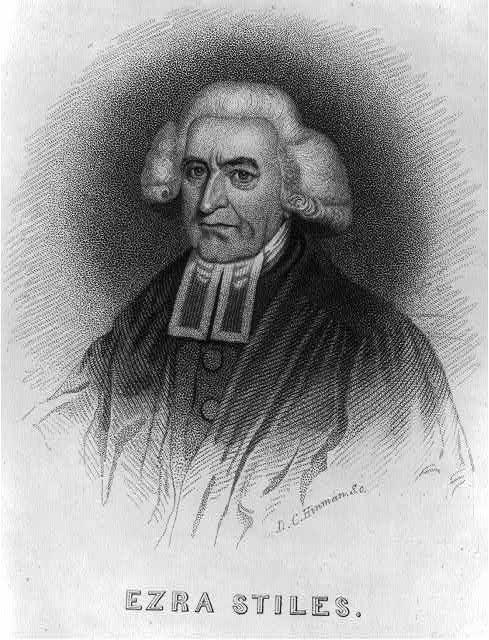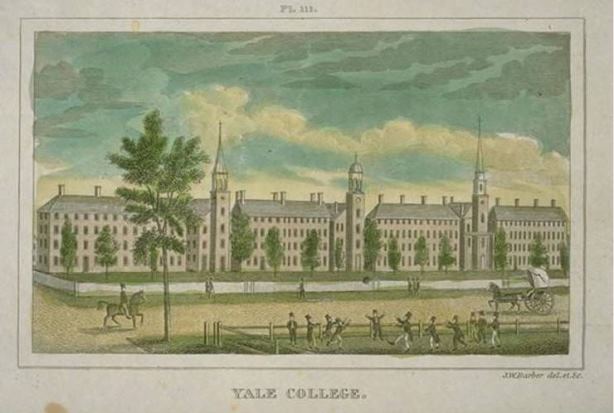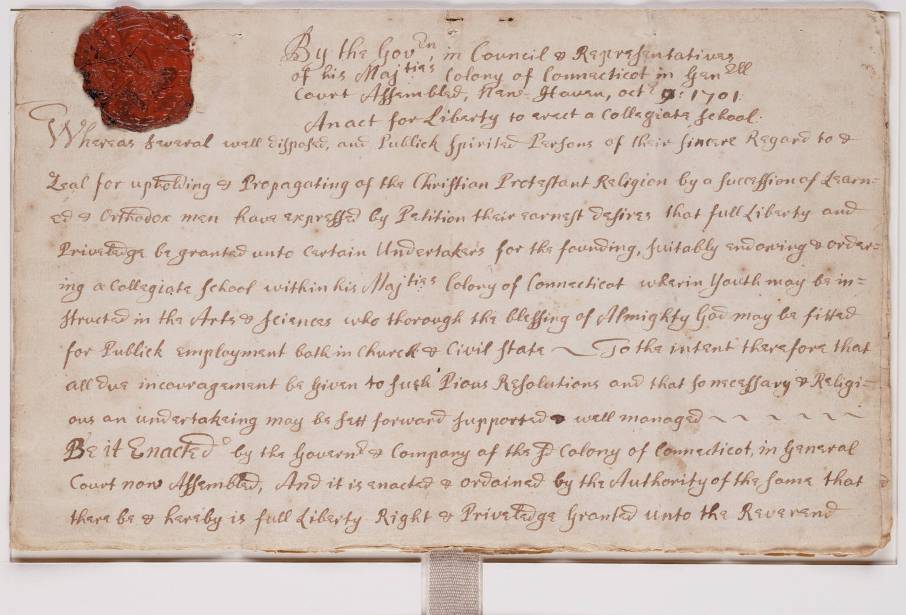by Patrick J. Mahoney
Since its founding in 1701 as the “Collegiate School,” Yale University, located in New Haven, has earned an international reputation for academic excellence. Among the institution’s alumni are a multitude of statesmen, diplomats, and foreign leaders, including five Presidents of the United States, 500 members of Congress, and 45 presidential cabinet members. Additionally, 49 Nobel Laureates have had a connection with the university, either in a student, academic, or working capacity.
The Colonial College
Following Harvard University (founded in 1636) and the College of William and Mary (founded in 1693), Yale University is the third-oldest higher-education institution in the United States, and one of only nine “colonial colleges” chartered before the American Revolution. All of these institutions played an integral role within their respective colonies as centers of learning and scholasticism, as well as training grounds for future leaders and professionals. Given the economic realities of the period, students largely attended colleges close to home; therefore, in the same vein as state universities today, these colleges became identified with the particular colonies in which they resided.
Founding the Collegiate School
While it is well documented that, in the autumn of 1701, the General Court of the Colony of Connecticut approved an act to establish a “Collegiate School” for the purpose of training young men for careers in religion and politics, Yale University’s roots actually date back to the mid-1600s. The idea for a college in Connecticut came from New Haven co-founder Reverend John Davenport, who graduated from Oxford University in England. Following Davenport’s death in 1670, his successor, Reverend James Pierpont, carried on his vision for a Connecticut college. Pierpont, along with a number of clerical colleagues from around the colony, eventually secured the charter for the Collegiate School.
After a brief period in which instructors conducted classes at locations in Killingworth (later renamed Clinton) and Saybrook, the college moved to its current location in New Haven in 1718. That same year, Boston-born businessman and philanthropist Elihu Yale donated the proceeds from the sale of nine bales of goods to construct a building meant to support the fledgling institution’s educational needs. In an effort to further strengthen the mission of the school’s founders, he also donated 417 books and a portrait of King George I to the school. In recognition of Elihu Yale’s financial and educational support, the Collegiate School changed its name to Yale College.
Becoming Yale University
While promoting the intellectual principals of the Great Awakening and the Enlightenment, Yale expanded steadily throughout the 18th century, surviving the turbulent and uncertain years of the American Revolution (during which its enrollment numbers swelled as a result of a rule exempting students from military service). Additionally, when the war ended, the return of students who chose to serve in the military gave Yale the highest enrollment of any of the colonial colleges. Writing at the time, Yale College President Ezra Stiles excitedly reflected in his diary about the bolstered enrollment numbers, noting, “Total 218, the greatest number ever together at once in an American University.”

Ezra Stiles – Library of Congress, Prints and Photographs Division
The 19th and early 20th centuries were a period of unprecedented growth for Yale—which changed its name to Yale University in 1887 to reflect its elevated status. Innovations during this period included the chartering of the Yale School of Medicine in 1810, the divinity school in 1822, the law school in 1824, and the Graduate School of Arts and Sciences in 1847. In 1861, the latter became the awarding body of the first PhD conferred in the United States.
Further transformation occurred in the early 1930s when the university adopted a residential college system. Mirroring prestigious English universities such as Oxford and Cambridge, the residential college structure divided the undergraduate student population into smaller learning communities to create a more intimate academic and social experience. The Yale model consisted of twelve communities of approximately 450 members who lived in the same dormitory buildings and utilized common resources including dining halls, libraries, and lounges.
The Modern University
Today, Yale University, which is comprised of the Graduate School of Arts, Yale College (providing undergraduate programs), and a number of professional schools, boasts over 11,000 students and 3,200 faculty from all 50 states, as well as 108 foreign countries. Additionally, what started as a small collegiate school in a residential area of New Haven now comprises 310 acres and over 260 buildings, as well as other landholdings not attached with the central New Haven campus.
Patrick J. Mahoney is a Research Fellow in History & Culture at Drew University and former Fulbright scholar at the National University of Ireland Galway









